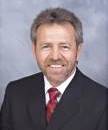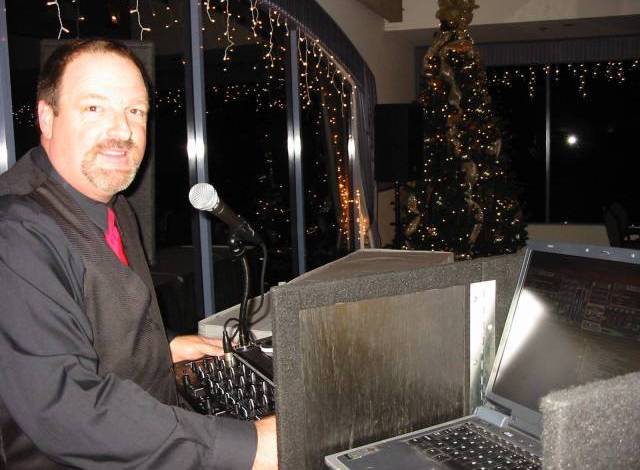





3853 Atlantic Ave.

|
Click here |
Report To Port Says Dockside Electric Power (Cold Ironing) To Run Ships At Berth Is Cost Effective In Some Cases, Urges Voluntary Or Incentive Pgm, Not Gov't Mandates
(April 9, 2004) -- LBReport.com posts the executive summary of a report commissioned by the Port of LB that analyzed the cost-effectiveness of "cold-ironing" (using shore side electricity to power vessels while at berth instead of shipboard engines) as a pollution control measure.
The report by Environ International of Los Angeles, also examined the feasibility of other alternative approaches (e.g. cleaner diesel fuel, exhaust controls, and engine replacement), and a comparison is made of the cost effectiveness of the various approaches.)
The executive summary says "cold ironing is generally cost effective with vessels that spend a lot of time at the port, and therefore have high annual power consumption. Use of cold ironing for vessels that currently have high annual power consumption in the Port could cause a significant reduction in the overall annual emissions generated by docked vessels in the Port each year."
It adds that "the availability of the various other types of emissions control technologies, while also potentially beneficial, is limited by a variety of implementation constraints that would slow their widespread application right away."
The further adds "that the various technologies that are analyzed, including cold ironing, could have significant regulatory, legal, and logistical hurdles to overcome, particularly if the South Coast Air Quality Management District (SCAQMD) or other local agency wishes to mandate their use."
The executive summary states:
All these possible control techniques have significant regulatory, legal, and logistical hurdles to overcome, particularly if the SCAQMD or other local agency wishes to mandate their use. Given such constraints, a voluntary program, or an incentive program may be the most productive means of reducing emissions from hotelling in the Port of Long Beach. To view the Port of LB's cold ironing report's executive summary in pdf form, click Cold Ironing Cost Effectiveness Study.
Comment is pending as we post.
In December 2002, the City Council unanimously approved a resolution agendized by Councilmembers Bonnie Lowenthal and Dan Baker requesting that the City Manager work with the Harbor Department to halt the idling of ships while at berth in the Port of Long Beach. The Council's December 2002 action took place in a "We look forward to working with the City Manager and Southern California Edison in the future to develop what might be alternatives when it comes to ship emissions...We will look forward to working with staff to come up with what we can see as being reasonable and rational as we move through this." In March 2003, as reported by LBReport.com, Port officials unveiled a "Healthy Harbor" initiative spotlighting Port environmental measures. In a written release noting that the initiative builds on past and current Port environmental efforts, Harbor Commissioners voted March 17 to approve an Air Quality Improvement Program that the Port said "combines existing and new efforts that surpass state and federal requirements and commit millions of dollars to reduce diesel emissions by promoting the use of alternative fuels and The Port release said its Air Quality Improvement Program exceeds state and federal requirements "because it aims to reduce diesel emissions from tenant and port owned vehicles and equipment as well as locomotives"...sources that are less regulated by the federal EPA and the local AQMD. As examples, the Port cited:
The Port noted that it has already begun evaluating the cold-ironing of ships and has undertaken programs to install pollution control equipment and convert In the Port release, LB Mayor Beverly O'Neill was quoted as saying, "We can continue to improve our quality of life while reaping the economic benefits or Port activity."
In October 23, 2003, as first reported by LBReport.com, more than 100 members of the public signed up to speak at a high stakes meeting of the CA Air Resources Board (ARB) at AQMD's Diamond Bar HQ...where the two agencies wrangled, then resolved, a dispute over a state clean air plan. Under pressure from AQMD, the CA ARB added measures to cut more pollutants.
AQMD Board chair Dr. William Burke, who also sits on the CA Air Resources Board, offered a motion calling on ARB develop tougher "short term" local measures (i.e. with an implementation date and specific reduction target, 2005-2008, implement 2006-2010) to expedite meeting the federal 2010 standards. A number of officials say meeting those standards is unlikely, without federal intervention to reduce pollution from sources mainly under federal jurisdiction such as ships, trains and airplanes.
Among several measures, Dr. Burke's AQMD motion urged ARB to develop and adopt regulations which "may include any of the following items or other actions as appropriate"...which included "cold ironing for ships calling on the Ports of Long Beach and Los Angeles."
Inclusion of this item was opposed by the Ports of LB and L.A...with the Port of LB testifying in opposition to designating cold ironing as a "short term" measure (i.e. with an implementation date and regulation targets).
Tom Johnson, PhD, Manager of Environmental Planning for the Port of LB said at the Oct. 2003 hearing that the Ports of LB and L.A. are already working on reducing diesel emissions...and the Port of LB has already started a study of cold ironing...and AQMD has planned a study but hasn't started it. He called the AQMD cold ironing proposal premature:
The fact is, the Port of Long Beach supports your staff's approach that keeps cold ironing as a long term measure and we strongly believe that adopting it as a short term measure would set the stage for non-attainment, and embroil the Board, the District and the interested parties in lengthy and non-productive lawsuits [from parties seeking to compel the promised attainment] and consultations." Dr. William F. Friedman, M.D. (appointed to the ARB by former Gov. Pete Wilson) moved to amend Dr. Burke's AQMD motion, inserting language making CA ARB's development and adoption of regulations on items in Burke's measures and others "contingent on their feasibility," noting that Dr. Burke's motion only said that regulations and other actions may include several items or actions "as appropriate."
And in response to some industry speakers, Dr. Friedman said in pertinent part:
And so I appreciate the concern that some have expressed -- dry cleaners and the industries, pain and others -- but these are areas obviously of emissions, these activities. And the question is when and if it would be feasible and how. But this is putting everybody on notice, but it's no new notice, everybody's known this anyway, that we;ve got to look continually and diligently and vigilantly and aggressively for ways to reduce emissions.
Personally, I'm still bothered that we don't seem to be making that much headway in the refineries, in the ports, in the areas of great pollution, diesel, trucking and I just wish there were more we could be doing, and it seems to me those would be obvious first look at areas. In spring 2003, as also first reported by LBReport.com, the Port of Long Beach quietly filed written comments objecting to parts of the local clean air plan The Port of LB's positions were not publicly agendized, discussed or adopted in any voted action of the LB Board of Harbor Commissioners. The letters, transmitted on behalf of the Port of LB to AQMD and CARB in March and April 2003 respectively, were signed by Port Planning Director Robert Kanter, PhD...and cc'd to other regulatory agencies and over a dozen shipping and maritime interest groups.
In its letter to the state Air Resource Board, the Port of Long Beach stated in part:
Marine-4 targets land side port operations for emission reduction and includes strategies such as alternative fuels, retrofit controls, and electrification. Unfortunately, little detailed information is included to assess to the maritime industry. With that in mind, we ask the CARB to work with the maritime industry to ensure that only feasible, cost-effective and state-wide measures are implemented...
Reached for comment at the time by LBReport.com, Dr. Kanter said the Port letters were not policy positions as such but were comments submitted by the Port mainly on technical issues. He noted that both of the agency proceedings anticipate comments on the proposed actions from interested parties and the public.
In August 2002, as previously reported by LBReport.com, the AQMD's Executive Officer called the ports of The AQMD release called port related impacts the "Number 1 Source of Southland Smog" and said, "All marine vessels in the ports emit more than 47 tons per day of smog-forming nitrogen oxides. That is more than one-fifth the amount emitted by all of the region's cars. It is also nearly equal to the total nitrogen oxide emissions from the top 300-emitting industrial facilities in the region, including all power plants and refineries." It added, "As ship traffic increases during the next 20 years, nitrogen oxide emissions from the ports are expected to increase by about 70 percent."
In November 2002, local environmentalists held a mock funeral, seeking to illustrate deaths statistically attributable to port or The Port of LB's governing body is a The Port's annual budget includes sums for advocacy. The City Council has the power to approve or disapprove the Port's annual budget as part of the City of LB budget.
Contact us: mail@LBReport.com |